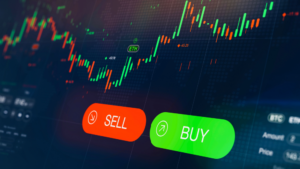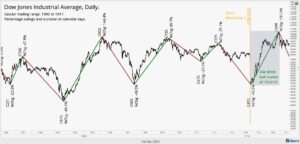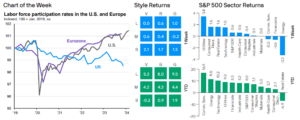Yesterday afternoon found investors glued to their news sources at 5:15. S&P Dow Jones Indices stated that they would be releasing the methodology that they would be using for Tesla’s (TSLA) inclusion into the S&P 500 Index (SPX). On November 16th, S&P announced that TSLA would be joining SPX on December 21st but left some ambiguity about how they would actually go about handling the largest addition to the index in its history. That ambiguity was removed yesterday when they declared that the index addition would be handled in one fell swoop at the close of trading on December 18th. In one sense, that is a relief. It would probably not be the best time to attempt a new index addition methodology during the largest addition in its history. But there will be many ancillary effects from that move. We will attempt to address some of them here.
That TSLA rallied about 5% on the news was hardly surprising. TSLA tends to rally on any news that can be reasonably interpreted as even mildly bullish. That stance has worked for its faithful investors throughout the years. With the stock around all-time highs (yet again) and having risen about 40% in the two weeks since the initial S&P announcement, that faith has been continually rewarded.
It is important to understand just how meaningful this addition is both to TSLA and SPX. The index is weighted by market capitalization, and TSLA sports a market cap roughly equal to that of Berkshire Hathaway (BRK.B). That implies that TSLA would sport a similar index weighting to BRK.B, which is about 1.5% of SPX, but since SPX uses free float in its calculations that lowers the projected weight to about 1.2%. The committee has not yet announced which company will be replaced by TSLA, but it is safe to assume that TSLA is magnitudes larger. There can be little disruption when the incoming company is similarly sized to the outgoing one. But when there is a significant disparity, index funds are forced to sell pro-rated stakes in the other 499 index components to raise the funds necessary to purchase the new name. Almost all money flowing into TSLA will by necessity need to come out of the rest of the index. That is likely to pressure the index on or around December 18th.
Bear in mind that the amount of money indexed or benchmarked to SPX is enormous. Estimates are that about $5 trillion is explicitly indexed to SPX (via index funds or ETFs like SPY) and that another $7 trillion is benchmarked to the index. The former class of funds must replicate the index perfectly, while the latter have some discretion about how to go about meeting or exceeding their benchmark. The explicit indexers would need to buy about $60 billion worth of TSLA (and sell that amount of other shares) to meet their obligations. With that sort of demand – and potentially another $85 billion if we include those who benchmark to the index – it is not at all surprising that TSLA’s stock jumped in response to the news of the index addition. The company is getting a new class of investors – and a necessarily price insensitive set at that.
This raises an interesting question about whether the market has already priced in the addition. The market capitalization of TSLA has risen by about $170 billion since S&P made its initial announcement. Speculators and various other investors are anticipating unprecedented demand for TSLA shares on December 18th. But they have already boosted the value of the stock by more than its potential demand on that date. Sharp eyed readers will notice that sum of the figures in the paragraph above is $145 billion, which is less than the total potential demand from index investors. Could this be one of the ultimate “Buy the Rumor, Sell the News” events?
There is one more potential complication that could upend the speculative case for TSLA shares. It is not unprecedented for companies or their insiders to sell shares into index announcements. It would not surprise me in the least if there is a tacit arrangement for either Tesla to issue new shares or for Elon Musk to sell some of his holdings on December 18th (or both). TSLA has continual cash flow needs and selling new shares into fresh demand at or near all-time highs would be a very inexpensive way to fund them. Mr. Musk has famously avoided selling his immense personal company shareholdings, but could an event like SPX index addition be the catalyst that persuades him to change his mind on that topic?
On top of everything, the index addition will be occurring on a quadruple witching expiration. This is not unusual, since SPX and other major index rebalancing typically occurs in conjunction with the quarterly expiration of index futures. Think of it this way – the December futures will expire without TSLA and will contain TSLA when March is unequivocally the front-month contract. But there are so many parts that will be moving at the very time that equity and ETF options will be expiring. Every time an underlying share crosses a strike around expiration, someone needs to re-hedge. With options open interest trending near all-time high levels, a potentially enormous amount of late hedging that could be required. That Friday will see 499 names with some potential degree of selling pressure at the close and one with a potentially gigantic buy pressure. Gamma may be at a premium that afternoon, and pin risk (the risk that a short option holder may not know whether or not they will be assigned shares upon expiration) may be substantial.
Even beyond this coming monthly expiration, the addition of TSLA may have profound effects upon the volatility of SPX. (Remember that VIX is based upon SPX volatility.) It is logical to expect that the addition of a highly weighted, highly capitalized stock to an index would raise the volatility of that index going forward. A quick, back of the envelope calculation shows a rise of about ½ – 3/4% to SPX:
SPX 66 Day Implied Volatility = 15.78
TSLA 66 Day Implied Volatility = 62.46
.988 * 15.78 + .012 * 62.46 = 16.34
16.34 – 15.78 = 0.56
For the example above, I used a 66-day measurement that roughly corresponds to the number of trading days in a quarter. Different periods lead to slightly different results, but the magnitudes are similar. (To be blunt, this is an imperfect calculation. A more accurate valuation would require considering the covariance of TSLA vs. SPX and its components, but I believe that the simple calculation approximates the increase fairly).
No matter how we slice it, the addition of TSLA to SPX will have profound effects upon a wide range of investors, from passive indexers to options speculators. Coming in late December, the event will largely culminate a crazy year. Markets typically take a breather in the weeks surrounding Christmas and approaching New Year’s Day. They may need a breather this year.
Disclosure: Interactive Brokers
The analysis in this material is provided for information only and is not and should not be construed as an offer to sell or the solicitation of an offer to buy any security. To the extent that this material discusses general market activity, industry or sector trends or other broad-based economic or political conditions, it should not be construed as research or investment advice. To the extent that it includes references to specific securities, commodities, currencies, or other instruments, those references do not constitute a recommendation by IBKR to buy, sell or hold such investments. This material does not and is not intended to take into account the particular financial conditions, investment objectives or requirements of individual customers. Before acting on this material, you should consider whether it is suitable for your particular circumstances and, as necessary, seek professional advice.
The views and opinions expressed herein are those of the author and do not necessarily reflect the views of Interactive Brokers, its affiliates, or its employees.
Disclosure: Options Trading
Options involve risk and are not suitable for all investors. Multiple leg strategies, including spreads, will incur multiple commission charges. For more information read the "Characteristics and Risks of Standardized Options" also known as the options disclosure document (ODD) or visit ibkr.com/occ
Disclosure: Futures Trading
Futures are not suitable for all investors. The amount you may lose may be greater than your initial investment. Before trading futures, please read the CFTC Risk Disclosure. A copy and additional information are available at ibkr.com.






























